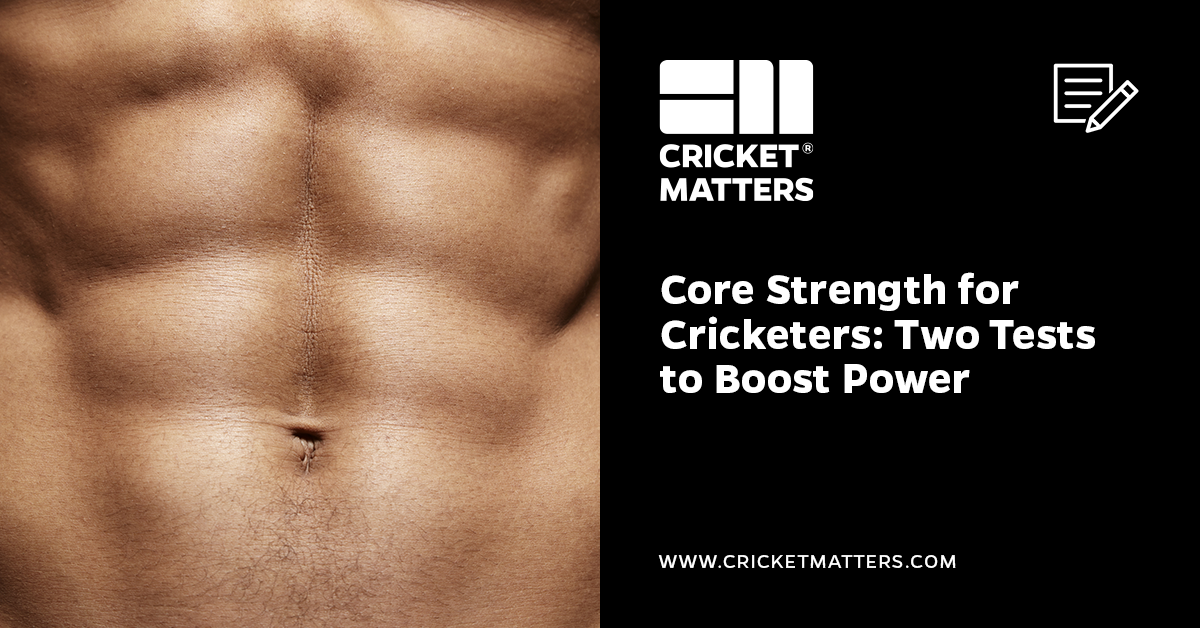
I hope you enjoy reading this blog post.
James Breese, Cricket Matters FounderIf you need my help with cricket coaching, strength and conditioning, injury rehab, or nutrition, click here.
Core strength isn’t just for bodybuilders. It’s the foundation of every six, every run, and every ball bowled.
Whether smashing boundaries, diving for a catch, or bowling long spells, your core muscles work tirelessly behind the scenes, powering every movement and keeping your body stable.
At Cricket Matters, we believe that developing the core power and rotational control needed to excel in the game requires essential core strength.
That’s why core strength tests are a key part of our Performance Analysis.
They’re designed to assess the building blocks of your cricket fitness, identifying strengths and exposing weaknesses that could hold you back on the field.
These tests are not just about ticking boxes—they are the gateway to unlocking your potential.
Core strength underpins everything—If your core isn’t strong enough, you’ll struggle to generate power, maintain endurance, and avoid injuries over a demanding season.
So, how do we assess the core and why? Let’s dive in and explain.
Table of Contents
Why Core Strength Matters for Cricketers

The Role of Core Strength in Cricket
The core is more than just your abs—it’s the central hub of power and stability for every movement you make in cricket.
This group of muscles, which includes the abdominals, obliques, lower back, and even the deeper muscles like the transverse abdominis and pelvic floor, work together to stabilize the spine and transfer force between the upper and lower body.
Here’s why it’s so important for cricketers:
Power Generation:
Every cricket action relies on efficient power transfer, from smashing a six to bowling fast. Your core acts as the bridge between your legs and your arms. Without it, much of the force your legs generate dissipates, resulting in weaker throws, slower balls, or less explosive shots.
For example, during a fast bowler’s delivery stride, the energy generated from their run-up transfers through the core into the arm. A weak core disrupts this chain, causing reduced speed and increased strain on the shoulder and elbow.
Dynamic Stability:
Cricket isn’t just about static positions—it’s a game of high-speed movements, sudden direction changes, and explosive actions like diving for a catch or sprinting between the wickets.
A strong core provides stability during these unpredictable, high-intensity actions. Think of it as your body’s shock absorber: When you dive or twist to field a ball, your core stabilizes your spine, preventing excess movement and reducing the risk of injury.
Injury Prevention:
Weak core muscles are linked to common cricket injuries, especially for bowlers and fielders.
Lower back pain is one of the most frequently reported issues among cricketers. Repetitive rotational movements and poor core stability often cause it.
Studies show that strengthening the core improves posture and reduces stress in the lumbar spine, shoulders, and hips. This is especially crucial for bowlers, who experience high-impact forces with every delivery bowled.
A weak core increases the load on smaller muscles and joints, leading to strain or chronic injuries over time.
Data-Driven Insights on Core Stability for Cricketers

Scientific research highlights the importance of core stability in injury prevention and performance enhancement for athletes, particularly cricketers.
Here’s what the evidence says:
Core Stability Reduces Injury Risk
Weak core muscles are a significant predictor of injuries in cricketers, especially bowlers and fielders. Studies show that:
- Neuromuscular Control and Dynamic Stabilization: Core-focused training improves neuromuscular control and dynamic stability, reducing injury risk. Huxel Bliven & Anderson (2013) found that core stability exercises specifically address deficiencies in strength, endurance, and movement patterns, lowering the rates of lower extremity injuries.
- Predictors of Injury Risk: A systematic review by De Blaiser et al. (2017) revealed that poor core strength, combined with deficits in endurance and proprioception, strongly predicts lower extremity injuries in athletes. This applies to cricketers, where repetitive movements like bowling and batting can exacerbate these deficits.
- Adolescent Bowlers: Forrest et al. (2019) showed that targeted injury prevention programs for teenage bowlers, focusing on hip, shoulder, and core strength, significantly reduced injury rates.
Core Stability Enhances Performance
The core doesn’t just protect you—it’s also the powerhouse behind cricket-specific movements. The research underscores the link between core stability and improved sporting outcomes:
- Rotational Power and Accuracy: Sports requiring rotational movements, like cricket and baseball, depend heavily on core stability. Silfies et al. (2015) found that stronger core muscles enhance upper extremity function, leading to better throwing and batting accuracy.
- Balance and Efficiency: Zemková & Zapletalová (2022) highlighted the role of core stability in improving balance and movement efficiency during dynamic activities like sprinting or diving for a catch. This translates to smoother, more controlled movements in high-pressure match scenarios.
Core Training Methods That Work
Effective training programs make all the difference in addressing core deficiencies:
- Swiss Ball vs. Pilates: Kamatchi et al. (2020) compared these methods for college-level cricketers. Both improved core strength and reduced injury risks, but Pilates showed greater performance gains, particularly in rotational power and injury prevention.
- Tailored Protocols for Cricketers: Training focused on dynamic stabilization exercises, such as those using resistance bands or Swiss balls, showed marked improvements in both core function and overall performance.
Cricketers with strong core stability have been shown to reduce injury risk by up to 30%
Schwartzkopf-Phifer et al., 2021
What This Means for Cricketers
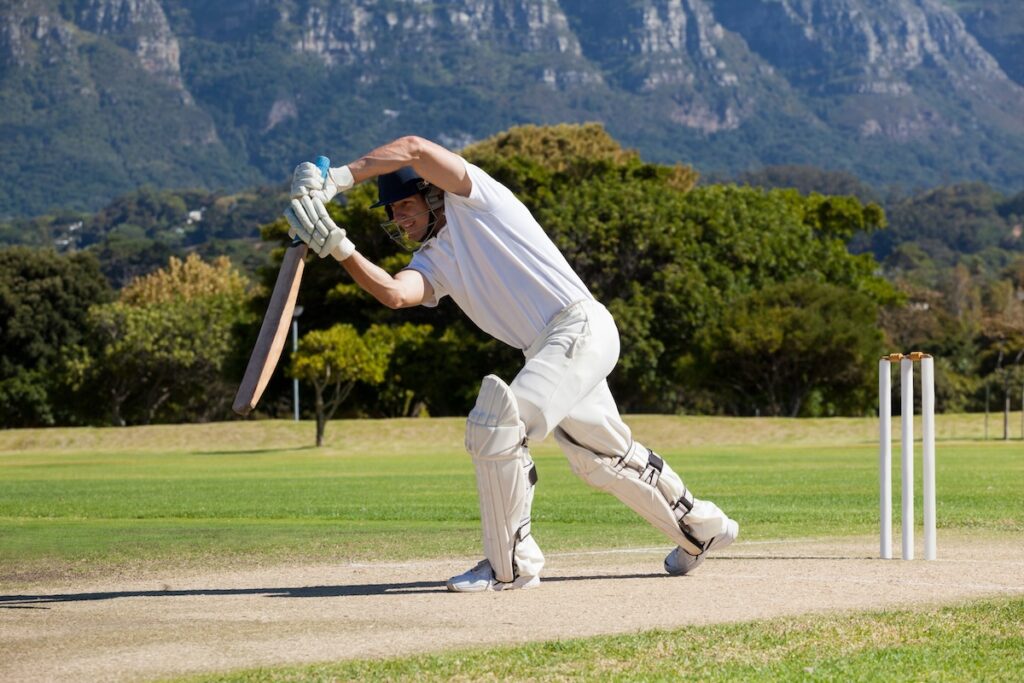
A strong core isn’t just a nice-to-have for cricketers—it’s a non-negotiable foundation for success.
Whether batting, bowling, or fielding, your core is the engine that powers everything. It provides the strength and stability for explosive movements, sharp turns, and sustained performance on the field.
Without it, you risk lower back pain, reduced rotational power, and inefficient movements.
At Cricket Matters, we understand that improving your game starts with understanding your core’s current capacity.
That’s why our Performance Analysis begins with two essential core strength tests: the trunk stability push-up and the 2-minute plank test.
These tests identify weaknesses that might hold you back and provide the foundation for targeted training.
We can help you build strength, resilience, and rotational control by addressing these weaknesses and unlocking your full athletic potential.
A strong core doesn’t just help you play better—it keeps you agile, powerful, and injury-free throughout a demanding cricket season.
Let’s dive into these two foundational tests and discover how they can improve performance.
Test 1: The Trunk Stability Push-Up (TSPU)
What is the TSPU?
The Trunk Stability Push-Up (TSPU) is a simple yet powerful tool for assessing dynamic core stability—your ability to stabilize the trunk while transferring force between the upper and lower body.
Unlike a traditional push-up, the TSPU emphasizes perfect form and trunk control, making it a reliable measure of functional core strength.
“The TSPU is not just a push-up—it’s a demonstration of how well your core functions as the engine of movement.”
Gray Cook, FMS
In cricket, where explosive actions and precise, technical movements are essential, the TSPU provides insights into how well your core supports these demands.
It’s a pass-or-fail test with standards adjusted for men and women:
- Men: Thumbs in line with the forehead.
- Women: Thumbs in line with the chin.
Why It’s Relevant for Cricketers
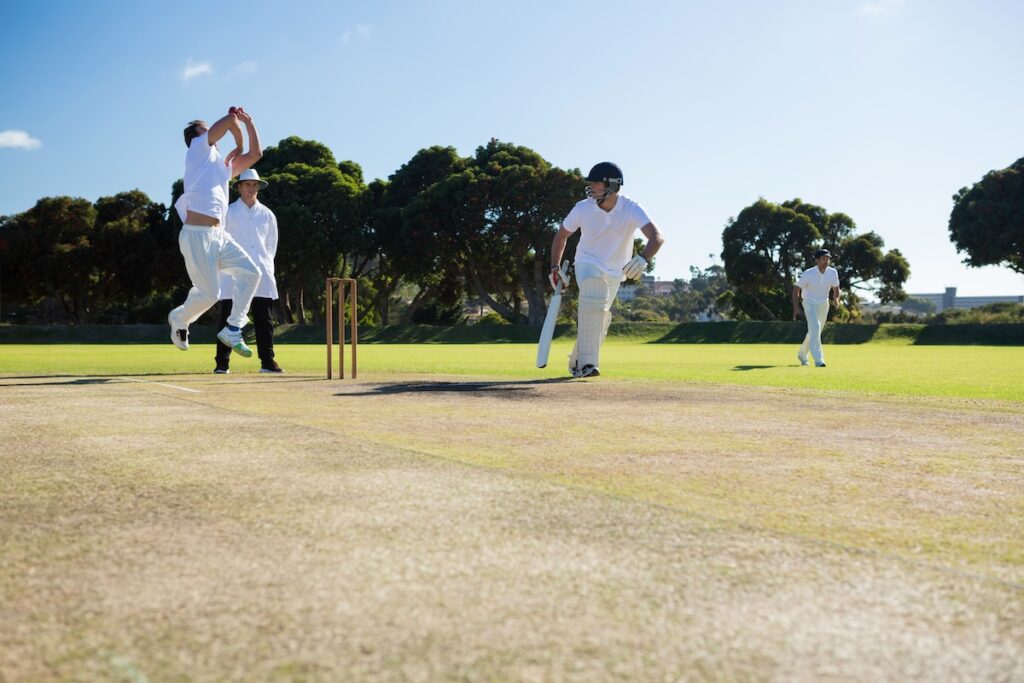
The TSPU assesses whether your core can handle cricket’s dynamic and rotational demands.
Weaknesses identified through this test directly correlate with injury risk and performance deficits:
- Real-World Application:
Cricketers rely on their core for explosive power and control when bowling, batting, and fielding. The TSPU simulates these force transfers, revealing deficiencies that could lead to inefficient movement or reduced power.- For example, a bowler’s delivery requires the core to stabilize against the forces generated by the run-up and arm swing. Poor stability could lead to energy loss and decreased bowling speed.
- Injury Prediction:
Research shows poor TSPU performance indicates an increased risk of non-contact injuries, particularly in sports with high dynamic demands like cricket.- Athletes scoring poorly on the TSPU have been shown to have significantly higher risks of lower extremity injuries (Rusling et al., 2012).
- In female athletes, lower TSPU scores correlate with increased risks of hip instability and knee injuries due to weaker core stability (Schwartzkopf-Phifer et al., 2021).
- Dynamic Coordination:
The TSPU also highlights coordination between the upper and lower body. This is essential for throwing or generating rotational power during batting.
“The TSPU evaluates core stability in dynamic movement, focusing on the ability to stabilize the trunk during force transfer between the upper and lower body.”
How to Perform the TSPU

To perform the Trunk Stability Push-Up correctly:
- Set-Up:
- Lie face down with your hands positioned flat on the floor:
- Men: Thumbs in line with your forehead.
- Women: Thumbs in line with your chin.
- Keep your feet together and toes flexed.
- Engage your core to maintain a straight line from head to toe.
- Lie face down with your hands positioned flat on the floor:
- Execution:
- Perform one push-up, lifting your body off the ground in a single, fluid motion.
- Ensure your chest, hips, and legs rise together without sagging or arching your back.
- Pass/Fail Criteria:
- Pass: A controlled, coordinated push-up with no compensations.
- Fail: Any visible asymmetry, sagging hips, or loss of core control results in failure.
Common Errors to Watch For:
- Sagging Hips: Indicates weak lower core stability.
- Arched Lower Back: Suggests poor anti-extension control.
- Asymmetrical Movement: Highlights imbalances in strength or coordination.
TSPU: Research-Driven Insights
The TSPU is more than just a fitness test; it’s a predictive tool backed by research:
- Predicting Injuries:
Low TSPU scores are strongly associated with higher injury rates in athletes. In one study, athletes scoring poorly on the TSPU were significantly more likely to suffer lower extremity injuries (Rusling et al., 2012). - Core and Lower Body Connection:
Poor TSPU performance reflects deficiencies in core stability, often linked to lower body injuries. For example, Schwartzkopf-Phifer et al. (2021) found that a novel training program focusing on anti-extension and anti-rotation exercises improved TSPU scores and reduced injury risks. - Training Improves Results:
Research by Dinç et al. (2017) demonstrated that corrective exercise programs significantly improved TSPU scores in young soccer players, which also translated to reduced non-contact injury rates. - Female Athletes:
Anderson et al. (2015) noted that women generally score lower on the TSPU due to differences in upper body strength and core stability, emphasizing the importance of tailored training strategies for female cricketers.
Interpreting Results
Passing the TSPU confirms that your core can dynamically stabilize your trunk during the high-speed, forceful actions cricket demands.
Failing the test, however, indicates areas that need targeted improvement:
- What a Failure Means:
A failed TSPU highlights core deficits that could lead to energy leaks during bowling or batting or even contribute to injury. - How to Improve:
Incorporate targeted exercises to address weaknesses:- Anti-Extension: Pallof presses and stability ball rollouts.
- Dynamic Core Work: Bird dogs and plank shoulder taps.
- Rotational Stability: Cable chops and resistance band twists.
The TSPU diagnostic tool clearly snapshots your core’s ability to meet cricket’s dynamic demands. By identifying weaknesses early, we can tailor training to ensure your core is strong, stable, and ready to elevate your performance.
Next, we’ll examine the 2-Minute Plank Test and how it complements the TSPU by measuring your static core endurance.
Test 2: The 2-Minute Plank Test
What is the 2-Minute Plank Test?
The Plank Test measures static core endurance by challenging your ability to hold a stable position while engaging the abdominal, back, and shoulder muscles.
Unlike the Trunk Stability Push-Up (TSPU), which assesses dynamic stabilization, the plank focuses entirely on sustained engagement, making it an excellent benchmark for core endurance.
“The plank test measures static core endurance by holding a position that engages abdominal, back, and shoulder muscles.”
Waldhelm & Li (2012)
In cricket, this test provides valuable insights into your ability to maintain posture and efficiency over long durations, such as during extended batting stints or sessions in the field.
Why the Plank Test is Crucial for Cricketers
- Static Endurance for Sustained Performance:
Cricket often demands hours of physical exertion, and static core endurance is essential for maintaining posture during prolonged match scenarios. Whether batting through an innings or crouching while wicket-keeping, your core’s endurance ensures that fatigue doesn’t compromise your form or efficiency. - Postural Control:
As fatigue sets in, cricketers are prone to slumping or losing balance. Poor plank performance often highlights deficiencies in core endurance that contribute to these postural breakdowns, increasing the risk of inefficient movements and injuries. - Baseline Measure for Endurance:
The plank provides a simple, repeatable test to measure your core endurance. While the TSPU evaluates dynamic control, the plank complements it by assessing your ability to sustain effort over time, forming a holistic view of your core’s capabilities.
How to Perform the Plank Test

To get the most accurate results, ensure your form is correct:
- Set-Up:
- Start in a forearm plank position, with your elbows directly beneath your shoulders and forearms parallel.
- Position your feet together and engage your core to maintain a straight line from head to heels.
- Execution:
- Lift your body off the ground, forming a stable plank position.
- Keep your head neutral, gazing at the floor, and ensure your hips are neither sagging nor raised too high.
- Hold for Time:
- Aim to hold the position for 2 minutes while maintaining perfect form.
Common Mistakes to Avoid:
- Sagging Hips: Signals weak lower core or glute engagement.
- Arched Lower Back: Indicates poor anti-extension control.
- Hips Too High: Reduces the workload on your core, skewing test results.
- Excessive Shaking: Signals poor muscular endurance
Interpreting Results
- Pass (2 Minutes):
Holding the plank for 2 minutes demonstrates strong static core endurance, essential for maintaining posture and efficiency. - Fail (Less Than 2 Minutes):
Falling short of the 2-minute benchmark highlights areas of weakness in core endurance.
Endurance is the foundation upon which strength and power rest; without it, the spine becomes susceptible to injury, and athletic performance diminishes.
Dr. Stuart McGill
Why the Plank Test Matters
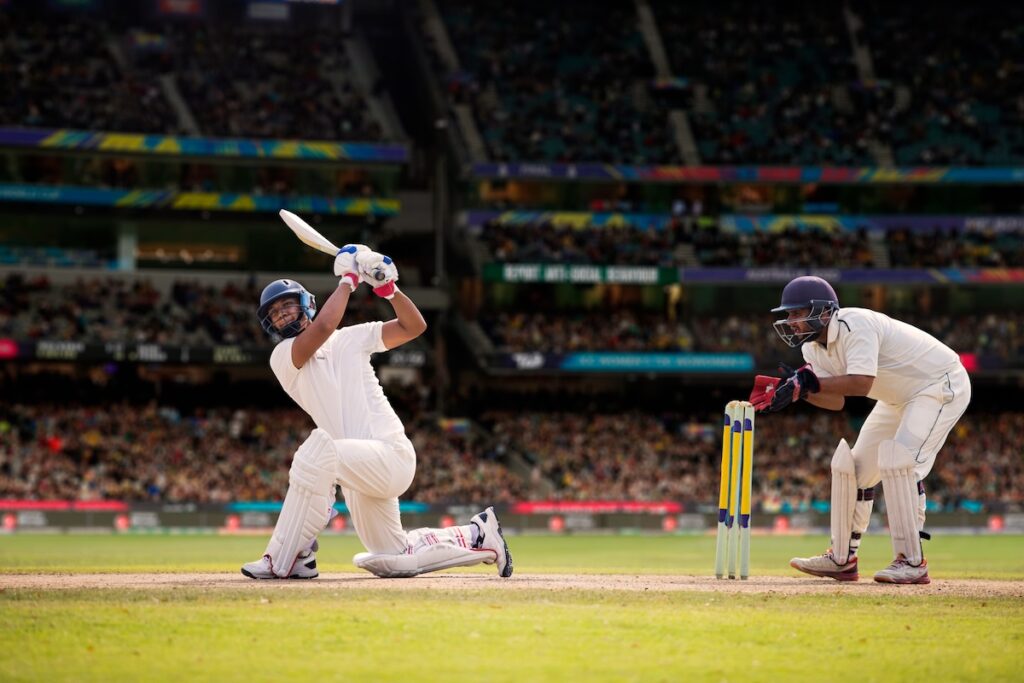
The 2-minute plank test at Cricket Matters is vital to cricket-specific fitness assessments.
It highlights your ability to maintain core stability over prolonged periods, directly impacting your ability to perform in long-duration match scenarios.
Addressing weaknesses uncovered in this test can improve endurance, posture, and resilience, reducing fatigue-related errors and injuries.
Together with the TSPU, the plank test offers a comprehensive evaluation of your core’s capacity to handle cricket’s unique physical demands.
Let’s explore how these tests complement each other in the next section.
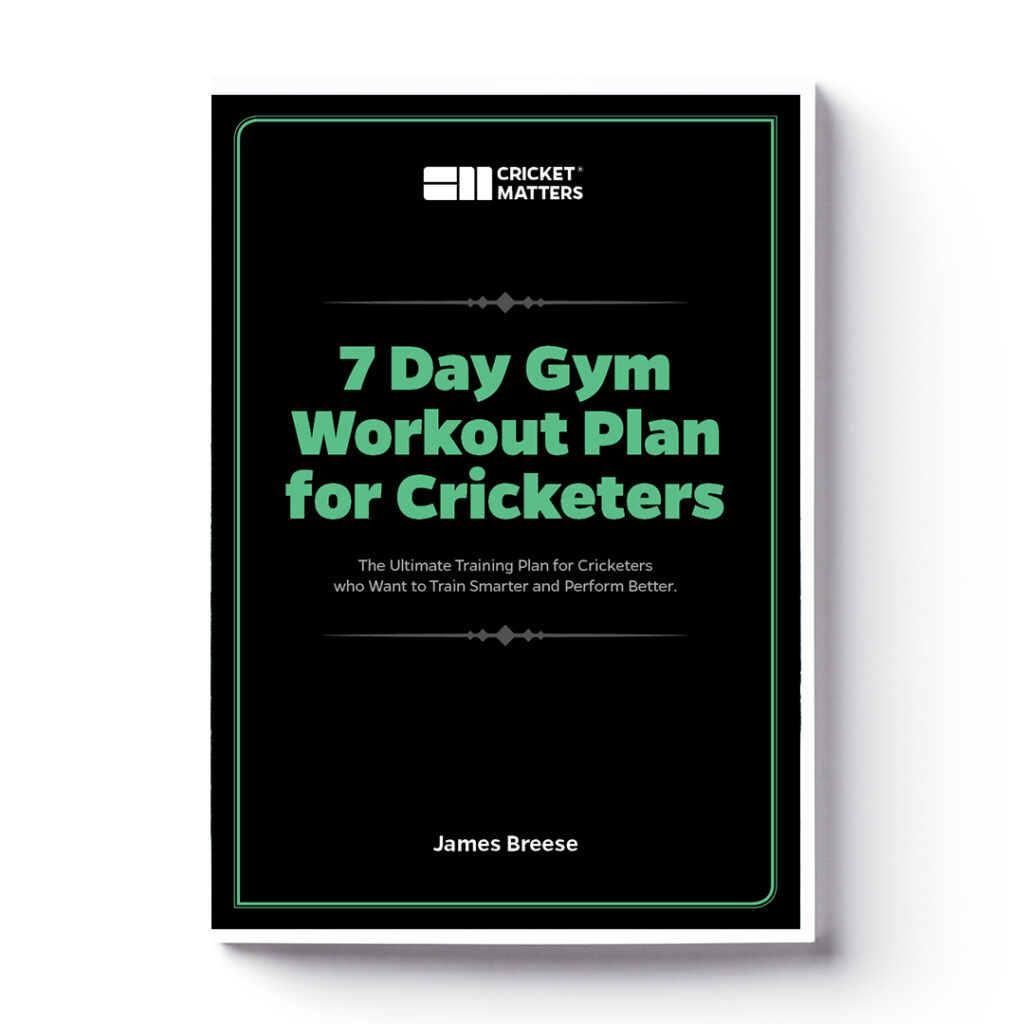
Have You Downloaded Our FREE 7-Day Gym Workout Plan?
Grab your complete step-by-step 7-day gym workout plan for cricketers today. There will be no more Guesswork. Just follow the plan and get results.
Comparing the TSPU and Plank Test

Dynamic vs. Static Core Strength
The Trunk Stability Push-Up (TSPU) and the 2-minute Plank Test are complementary tools for evaluating core functionality.
While the TSPU measures dynamic stability, essential for explosive movements, the Plank Test focuses on static endurance, which is critical for maintaining posture and resilience during matches.
Here’s how the two tests compare:
| Aspect | TSPU | 2-Minute Plank |
|---|---|---|
| Primary Focus | Dynamic stability and coordination | Static endurance and postural control |
| Applicability | Bowling, fielding, and explosive shots | Batting stances, long fielding sessions |
| Injury Prediction | Strong for dynamic injuries | Moderate for postural issues |
| Ease of Administration | Requires scoring expertise | Simple and accessible |
| Target Population | Athletes, especially in dynamic sports | General fitness populations |
| Muscle Emphasis | Coordinated stabilization across core, shoulders, and hips | Sustained engagement of abdominal and back muscles |
When to Use Each Test
- TSPU:
The TSPU is ideal for assessing dynamic core stability and movement coordination. It benefits cricketers who perform explosive actions like bowling, batting, and fielding. - 2-Minute Plank Test:
The Plank Test provides insights into static core endurance, making it valuable for cricketers who need sustained postural control for long hours in the field.
The Trunk Stability Push-Up evaluates the athlete’s ability to maintain a rigid torso and control spinal alignment under dynamic conditions—key components of core stability necessary for safe and efficient athletic movement.”
Gray Cook
Why Both Tests Are Essential
The TSPU and Plank Test comprehensively assess a cricketer’s core strength and functionality.
By understanding dynamic and static capabilities, players can target specific weaknesses and ensure their core is prepared for the game’s unique demands.
Whether your focus is explosive power or prolonged stability, these tests provide the foundation for tailored training that enhances performance and reduces injury risk.
Core Strength Corrective Programs Based on Results

If your Trunk Stability Push-Up (TSPU) or 2-minute Plank Test highlights areas for improvement, a focused corrective program can help address weaknesses and build the foundational core strength required for cricket performance.
The key is to target the specific deficits revealed in these tests, gradually progressing to movements that integrate core stability and endurance into cricket-specific actions.
For Low TSPU Scores
A low TSPU score often indicates deficiencies in dynamic core stability and coordination. Corrective exercises should focus on anti-extension and anti-rotation movements to develop strength and control while progressively incorporating dynamic stability.
- Key Corrective Exercises:
- Pallof Press (Anti-Rotation):
- This exercise strengthens your ability to resist rotational forces, improving stability during dynamic movements.
- Progression: Begin with isometric holds before advancing to dynamic presses using cables or resistance bands.
- Bird Dogs (Dynamic Coordination):
- Improves coordination between the upper and lower body while engaging the deep core muscles.
- Tip: Perform slowly and deliberately to ensure proper alignment and core activation.
- Cable Rotations (Rotational Stability):
- Develops dynamic control and strength during rotational movements, mimicking actions like throwing or sweeping.
- Progression: Start with light resistance and controlled motion before increasing speed and range.
- Pallof Press (Anti-Rotation):
For Weak Plank Performance
Failing to hold a plank for 2 minutes suggests insufficient static core endurance.
Corrective exercises should target prolonged core engagement and gradually build endurance through progressive overload.
- Key Corrective Exercises:
- Side Planks (Lateral Stability):
- Builds endurance in the obliques and lateral stabilizers, essential for sustained postural control.
- Progression: Add dynamic elements like leg lifts or hip dips for increased difficulty.
- Glute Bridges (Posterior Chain Activation):
- Strengthens the glutes and lower back, helping maintain a neutral spine during prolonged postures.
- Tip: Focus on squeezing the glutes at the top to ensure proper activation.
- Weighted Planks (Progressive Static Endurance):
- Increases the challenge by adding resistance, forcing the core to adapt and strengthen.
- Tip: Start with minimal weight and gradually increase duration and load while maintaining perfect form.
- Side Planks (Lateral Stability):
Functional Integration for Cricketers

Once foundational core strength and endurance are improved, it’s essential to integrate these gains into cricket-specific movements.
This ensures that your core is not only strong but also functional and efficient during matchplay.
- Example Cricket-Specific Core Training Program:
- Warm-Up:
- Include dynamic stretches and mobility drills such as thoracic rotations and cat-camel movements to prepare the core and spine.
- Static Core Work:
- Incorporate front and side planks to reinforce endurance and control.
- Dynamic Core Work:
- Use bird dogs, Pallof presses, and stability ball rollouts to develop stability during movement.
- Sport-Specific Integration:
- Perform medicine ball rotational throws to mimic batting and bowling actions.
- Use resistance bands for rotational movements replicating a bowler’s delivery or a batter’s swing.
- Cool-Down:
- Finish with controlled breathing exercises and gentle stretches to relax the core and maintain mobility.
- Warm-Up:
Why This Approach Works for Cricketers
Targeted corrective programs address the specific deficits identified in the TSPU and plank tests, building a resilient and functional core.
By developing dynamic stability and static endurance, cricketers can enhance their ability to generate power, maintain posture, and reduce injury risks.
A strong core doesn’t just support your game—it transforms it.
Key Takeaways: Your Core is the Key Performance

The Trunk Stability Push-Up (TSPU) and 2-Minute Plank Test are essential tools for assessing and improving your core’s dynamic and static capabilities—both vital for cricket performance.
But your core is only part of the bigger picture.
To truly excel, you need a complete understanding of how your body moves, your mental resilience, and your technical skills.
At Cricket Matters, our Performance Analysis goes deeper. We don’t just look at your core—we evaluate how your entire body moves, uncover technical inefficiencies, and identify areas to strengthen physically and mentally.
By combining all these elements, we can create a tailored training plan to unlock your full potential and help you perform better in every match.
Ready to Take Your Game to the Next Level?
Book your Performance Analysis today and gain insights into every aspect of your game.
Our comprehensive approach will transform your cricket performance from core stability to mental resilience and technical precision.

Have You Downloaded Our FREE 7-Day Gym Workout Plan?
Grab your complete step-by-step 7-day gym workout plan for cricketers today. There will be no more Guesswork. Just follow the plan and get results.
Further Reading
FAQ’s
What Is the Trunk Stability Push-Up (TSPU) and How Does It Benefit Cricketers?
The Trunk Stability Push-Up (TSPU) test measures how well the core can stabilize the body during dynamic movements. It is performed by doing a single push-up while keeping the body straight and stable without sagging or twisting. For cricketers, the TSPU is crucial because it evaluates the ability of the core to transfer energy efficiently between the upper and lower body. This is essential for actions like bowling, throwing, and diving, where stability and coordination are key. A strong performance in the TSPU indicates that a cricketer’s core can support powerful, controlled movements on the field.
What Is the 2-Minute Plank Test, and Why Is It Important for Cricketers?
The 2-Minute Plank Test measures core endurance by holding a plank position for up to two minutes. It assesses the ability of the abdominal, back, and shoulder muscles to maintain engagement for prolonged periods. For cricketers, core endurance is essential during long batting stances, extended fielding sessions, or wicket-keeping. A strong performance in this test shows that a cricketer can maintain proper posture and stability throughout a match, reducing the risk of fatigue-related breakdowns that can lead to injuries or reduced efficiency on the field.
How Do the TSPU and Plank Tests Differ in Assessing Core Strength?
The TSPU and 2-Minute Plank Test assess different aspects of core strength. The TSPU focuses on dynamic stability, testing how well the core stabilizes the body during movement, which is important for explosive actions like bowling or batting. In contrast, the plank test measures static endurance, evaluating the core’s ability to maintain engagement over long periods, such as during fielding or extended stances. Together, these tests provide a comprehensive understanding of a cricketer’s core’s dynamic and static capabilities.
Why Is Core Strength Crucial for Enhancing Power in Cricket?
Core strength is the foundation for generating power in cricket. Whether batting, bowling, or throwing, the core bridges the upper and lower body, allowing energy to transfer efficiently. A strong core ensures that movements are powerful and precise, enabling cricketers to hit harder, bowl faster, and throw more accurately. Without sufficient core strength, energy is lost during these actions, leading to reduced performance. Additionally, core strength supports stability and balance, which are critical for maintaining control in high-pressure situations.
How Often Should Cricketers Assess Their Core Strength?
Cricketers should assess their core strength regularly to track progress and address any weaknesses. Ideally, assessments like the TSPU and 2-Minute Plank Test should be performed every 8 to 12 weeks. This allows players to monitor improvements and adjust their training programs as needed. Regular testing also helps identify any imbalances or deficiencies early, ensuring corrective exercises can be implemented to prevent injuries and enhance performance.
Can Improving Core Strength Help Prevent Common Cricket Injuries?
Yes, improving core strength plays a significant role in preventing common cricket injuries. A strong core stabilizes the spine, reducing the risk of lower back pain, which is a frequent issue for bowlers and fielders. It also helps maintain proper posture, minimizing strain on the shoulders and hips during repetitive movements like bowling or throwing. By improving core stability and endurance, cricketers can reduce fatigue-related breakdowns in form, which often lead to injuries. Incorporating targeted core exercises into a training program is one of the most effective ways to build resilience and stay injury-free.
Is Core Strength Important for Cricket?
Core strength is essential for cricket because it underpins nearly every movement on the field. Whether batting, bowling, or fielding, your core provides stability, balance, and power. A strong core ensures efficient energy transfer between the upper and lower body, making hitting a six, bowling fast, or diving for a catch more efficient. Cricketers are more prone to injuries, fatigue, and reduced performance without adequate core strength. Developing core strength is a fundamental part of any cricket-specific fitness program.
Does Core Strength Help Punching Power?
Yes, core strength significantly contributes to punching power. The core is the foundation for generating force and transferring it from the lower body to the upper body during a punch. A strong core allows for better rotation and stability, enabling you to deliver more powerful and controlled punches. While this is not directly related to cricket, the principle is the same: a well-developed core is essential for any movement that requires power and precision, including hitting, throwing, or bowling in cricket.
Does Core Strength Help Fast Bowling?
Core strength is vital for fast bowling because it provides stability, balance, and power during the delivery stride and follow-through. A strong core ensures that the bowler can maintain proper posture and alignment, which reduces stress on the lower back and shoulders. It also allows for efficient energy transfer from the legs to the arm, enabling faster ball speeds. Bowlers may experience fatigue, loss of control, and an increased risk of injury without adequate core strength. Strengthening the core is a key component of any training program for fast bowlers.

